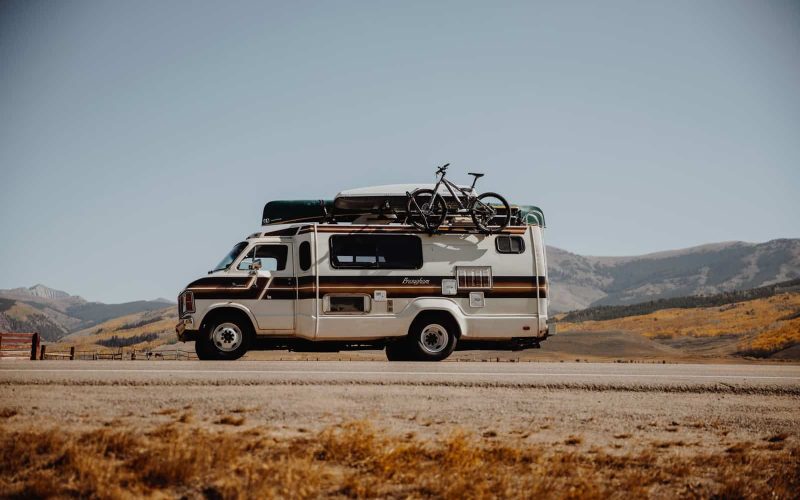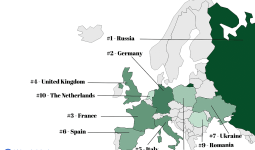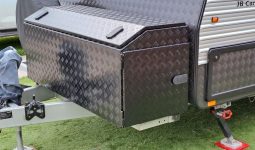There are many ways to camp in the wild, and each camper type has advantages and disadvantages. If you’re overwhelmed by all the options, don’t worry!
Here’s a list of ten different types of campers to help you decide which is best for you.
1. Teardrop Camper
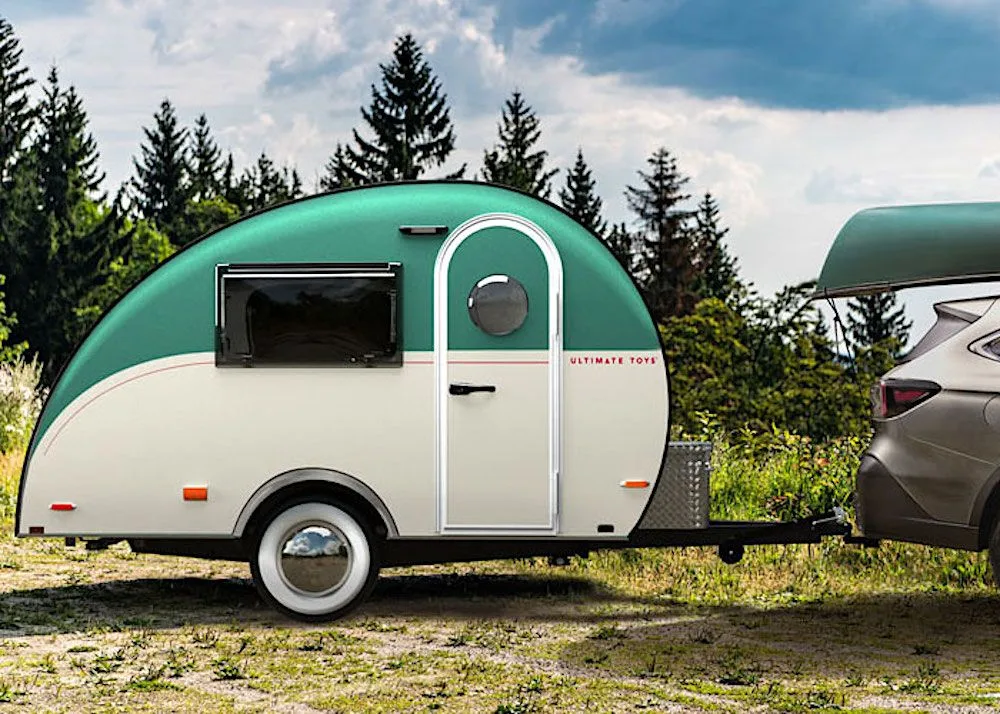
If you’re looking for a campground on wheels, the teardrop camper may be right for you; it is currently one of the different types of campers on the market.
The name is self-explanatory: it’s a small, rounded vehicle that looks like it’s been torn in half.
Teardrop campers are usually built from lightweight materials and have high clearances, allowing them to traverse rough terrain easily.
Because of their low weight, they’re also easier to tow; however, most models don’t have much storage space inside or outside the camper.
Many people love teardrop campers because they’re simple and easy to use—no power is required to drive around in one!
Others find it cramped or difficult to live long-term because there is little space for personal belongings like clothing or food supplies (unless you buy extras).
In addition, if you have larger items such as furniture, this type might not work out well either since there won’t be enough room inside your living quarters!
2. Hybrid Trailer
Hybrid trailers combine travel trailers and fifth-wheel trailers. They can be pulled by a pickup truck, making them great for families who want camping but don’t have access to a large vehicle.
Hybrid trailers have a bed, bathroom, kitchen, and living area. The owner usually sleeps in the living room at night while others sleep in separate bedrooms or pull-out bunks.
The kitchen has everything you’ll need to cook meals during your stay in campgrounds or parks, making the hybrid trailers one of the best campers.
3. Expandable Trailer
An expandable trailer is the way to go if you’re looking to start with a small trailer and expand it as you need.
Expandable trailers are great for people with a small family who plan to have more.
They can also be helpful if you want to buy a bigger trailer later on but don’t have enough money right now.
Expandable trailers generally come in two types: those with removable walls (which are more expensive) or ones that slide out when needed (which are less expensive).
Of all the different types of campers, the expandable trailers are one of the smallest.
4. Class C Motorhome
Like most campers, these are easy to drive, have cruise control capabilities, and can be purchased in smaller models that are still large enough to hold your entire family (and their gear).
This makes them a good choice for first-time RV owners who want to travel lightly but still enjoy the comforts of home while away from home.
A cheaper option: While Class A motorhomes offer more luxury than their lighter counterparts like Class Bs or campers/trucks, they’re also more expensive—sometimes by tens of thousands of dollars, depending on your chosen features! So why not opt for it instead?
If you’re looking at buying an RV but don’t want something big or expensive right now, consider purchasing one instead; they’ll allow you some time before taking out a mortgage loan and very low monthly payments after getting approval from your lender—no bank approval needed!
5. Toy Hauler
What is a Toy Hauler? A Toy Hauler is a type of trailer used to tow toys.
They are typically smaller than other trailers and are used to tow smaller toys such as motorcycles, ATVs, jet skis, and snowmobiles.
They’re not meant to carry large amounts of cargo, but they have room inside for personal belongings like clothes or camping equipment.
What makes them different from other different types of campers? The biggest difference between toy haulers and traditional travel trailers is how much space they occupy on the road when driving down the highway.
Most toy haulers are only 8 feet wide, so they take up less space on the road than an 18-20 foot-long travel trailer would.
6. Fifth-Wheel
Fifth-wheel campers have a fifth wheel that attaches to the truck’s rear hitch.
This camper is the largest and most expensive but also offers the most amenities.
The fifth wheel is attached to two axles on either side of your vehicle, which means many trucks can tow it, and it has a very low center of gravity.
This makes them very stable when driving down twisty mountain roads or through rainstorms, but it also means they are harder to maneuver in tight spaces like parking lots!
Since they do not sit directly on top of your truck bed like other different types of campers, fifth-wheel campers offer more storage space inside their cabins than other camper types (though this varies based on model).
Most people who own fifth-wheels opt for “dry camping” at designated campsites where electricity is available—but if you want complete freedom from hookups.
At the same time, do you travel through wilder areas with less infrastructure nearby? Fifth wheels might not be right for you.
7. Class B Motorhome

Class B motorhomes are the smallest class of RV. They’re usually less than 40 feet long and less than 10 feet wide, and compared to other types of campers, Most Class Bs are less than 8 feet tall.
Class Bs are generally built on a van chassis, which means they have a smaller engine than other RVs. This makes them more fuel-efficient and easier to drive.
If you’re looking for something easy to drive on city streets (or even smaller roads), this is the ideal choice!
8. Tiny Travel Trailer
As you can tell from the name, a tiny travel trailer is a smaller version of a full-sized camping trailer.
Like all travel trailers, it has two axles and can be towed by a regular car or small truck.
The main difference between this and other campers is that it’s usually only large enough for one or two people to stay in at once (though some do have bunk beds).
They are also much lighter than their larger counterparts—usually weighing around 1,500 pounds compared to 5–7 tons for the motorhome.
Tiny homes are becoming increasingly popular because they offer many of the same amenities as their big brothers but with less space and weight to worry about when traveling long distances.
9. Pop-Up Camper
Unlike other campers, the pop-up camper is a small, lightweight trailer that folds into a compact package.
The pop-up camper is typically towed behind an automobile and set up at campsites in minutes.
Winnebago invented it, though other manufacturers produce similar units.
These lightweight units are perfect for first-time campers or those who want to travel light on their next vacation.
Some come with AC/fans, but these tend to be heavier and cost more, so if you’re looking for something small, then this isn’t your best bet either way—you’ll probably need an RV instead unless you want something cheap and simple like we did when we first started camping!
10. Diesel Pusher Motorhome
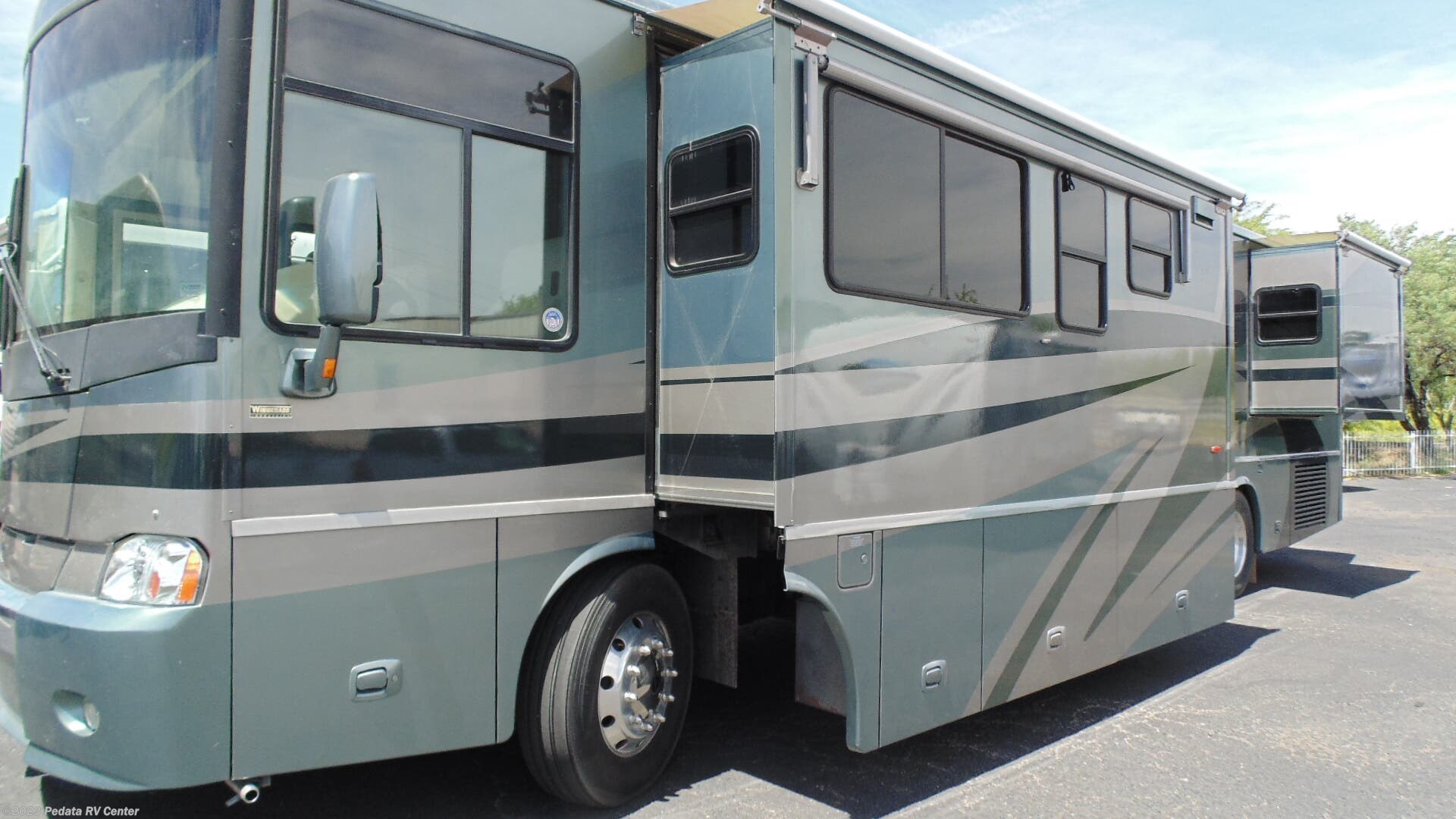
One of the most common types of motorhomes is the Classic A Diesel Pusher Motorhome, which is also one of the different types of campers.
These RVs will have a single-axle diesel pusher system and a large rear axle with a fifth wheel attached.
The cab will be behind this rear axle with two axles in front, each with dual wheels.
This configuration allows for better stability when driving down the road. It reduces bounce or swaying from side to side, making for an easier ride for all passengers inside the vehicle.
Another benefit of having multiple axles is that you can get some good weight distribution when you drive over rough terrain like dirt or gravel roads; therefore, there’s less chance that your RV will get stuck or tip over due to poor traction on those surfaces!




